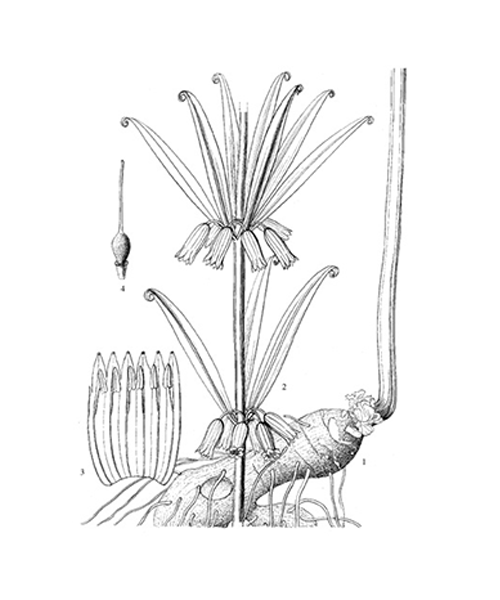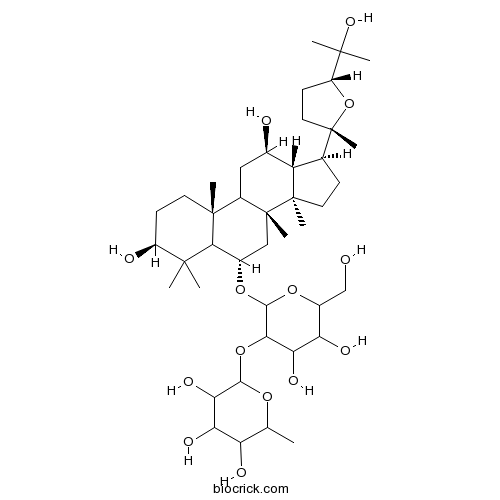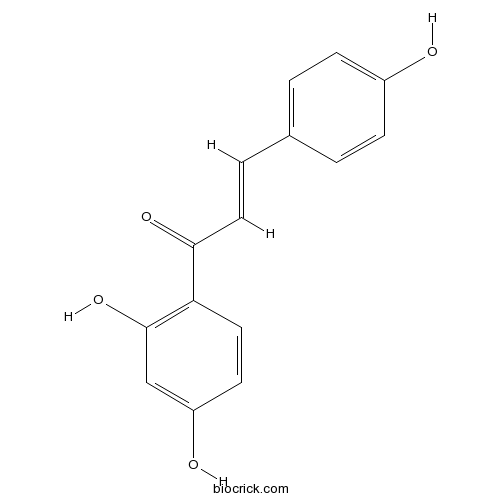Polygonatum kingianum
Polygonatum kingianum
1. The products in our compound library are selected from thousands of unique natural products; 2. It has the characteristics of diverse structure, diverse sources and wide coverage of activities; 3. Provide information on the activity of products from major journals, patents and research reports around the world, providing theoretical direction and research basis for further research and screening; 4. Free combination according to the type, source, target and disease of natural product; 5. The compound powder is placed in a covered tube and then discharged into a 10 x 10 cryostat; 6. Transport in ice pack or dry ice pack. Please store it at -20 °C as soon as possible after receiving the product, and use it as soon as possible after opening.

Natural products/compounds from Polygonatum kingianum
- Cat.No. Product Name CAS Number COA
-
BCN1250
Diosgenin glucoside14144-06-0
Instructions

-
BCN5944
Liquiritin551-15-5
Instructions

-
BCN5946
Liquiritigenin578-86-9
Instructions

-
BCC4109
Salicylic acid69-72-7
Instructions

-
BCN1062
Pseudoginsenoside F1169884-00-0
Instructions

-
BCN4512
Isoliquiritigenin961-29-5
Instructions

Species identification of polygonati rhizoma in China by both morphological and molecular marker methods.[Pubmed: 29428511]
Morphological markers as well as two types of molecular markers, inter-sample sequence repeat (ISSR) and start codon targeted (SCoT) are suitable for species identification of the polygonati rhizoma germplasms. In this paper, we adopted these methods for the identification of rhizomes collected from 47 areas in China. Based on their morphological characters, the collected germplasms were classified into two populations, one with alternate leaf arrangement and the other with verticillate leaf arrangement, and they were comprised of five species and fourteen subgroups. Of the five species identified: Polygonatum kingianum, P. cirrhifolium, P. alternicirrhosum, and P. sibiricum belonged to one cluster, and P. cyrtonema belonged to a different cluster. According to the analysis of both ISSR and SCoT markers, all germplasms with greater genetic similarity were classified into one group. Especially, P. sibiricum and P. cirrhifolium, which shared ∼80% similarity, were clustered together, whereas the germplasms identified as P. kingianum with ∼86% similarity formed a separate clade. P. kingianum showed a much greater genetic similarity with P. cyrtonema than with P. sibiricum. The multidimensional scaling analysis further verified the accuracy and reliability of the molecular marker-based results. Thus, both morphological and molecular methods should be combined for the differentiation of germplasms such as those of polygonati rhizoma.
Intake of total saponins and polysaccharides from Polygonatum kingianum affects the gut microbiota in diabetic rats.[Pubmed: 28257664]
The gut microbiota has been reported to play a critical role in metabolic diseases, including in diabetes. Polygonatum kingianum has been used in the treatment of diabetes and related diseases in China for centuries. Total saponins (TSPK) and total polysaccharides (PSPK) were reported to be major types of active constituents of P. kingianum. This research aims at investigation of their therapeutical mechanisms on diabetes based on the regulation of gut microbiota.
Antidiabetic effect of total saponins from Polygonatum kingianum in streptozotocin-induced daibetic rats.[Pubmed: 26743227]
Polygonatum kingianum has been used in the prevention and treatment of diabetes, hyperlipidemia and related metabolic syndrome in Asian counties for centuries. In this study, the blood glucose regulation activity and mechanism of total saponins from P. kingianum (TSPK) were investigated in streptozotocin (STZ)-induced diabetic rats in this research.
Saponins from the processed rhizomes of Polygonatum kingianum.[Pubmed: 19721268]
Two new spirostanol saponins, named kingianoside H (1) and kingianoside I (2), were isolated from the processed rhizomes of Polygonatum kingianum, along with a known triterpenoid saponin ginsenoside-Rc (3), four known spirostanol saponins Tg (4), (5), polygonatoside C(1) (6) and ophiopogonin C' (7). The structures of the new compounds were elucidated by detailed spectroscopic analyses, including 1D and 2D NMR techniques and chemical methods. Compounds 3 and 5 were first reported from the genus Polygonatum. Compounds 4, 6 and 7 are reported for the first time from the processed Polygonatum kingianum.
Three new saponins from the fresh rhizomes of Polygonatum kingianum.[Pubmed: 19122309]
Further studies on the fresh rhizomes of Polygonatum kingianum led to the isolation of one new spirostanol saponin (25R)-kingianoside G (1), and two pairs mixture of 25R and 25S stereoisomeric spirostanol saponins (25R, S)-pratioside D1 (2a, 2b) and (25R, S)-kingianoside A (3a, 3b), among them 2b and 3b were new spirostanol saponins, together with another two known compounds, disporopsin (4) and daucosterol (5). The structures of the new saponins were determined by detailed analysis of their 1D and 2D NMR spectra, and chemical evidences.
Furostanol saponins from the fresh rhizomes of Polygonatum kingianum.[Pubmed: 16819206]
Ten furostanol saponins were isolated as five pairs of 25R and 25S epimers from the fresh rhizomes of Polygonatum kingianum. Seven of them were identified as new compounds, (25S)-kingianoside D (2), (25S)-kingiano-side C (4), (25R,22)-hydroxylwattinoside C (5), kingianoside E (7), (25S)-kingianoside E (8), kingianoside F (9) and (25S)-kingianoside F (10), together with three known saponins, kingianoside C (1), kingianoside D (3), and 22-hydroxylwattinoside C (6). The structures of the new saponins were determinded by detailed analysis of their 1D and 2D NMR spectra, and by comparison of the spectral data with those reported.


